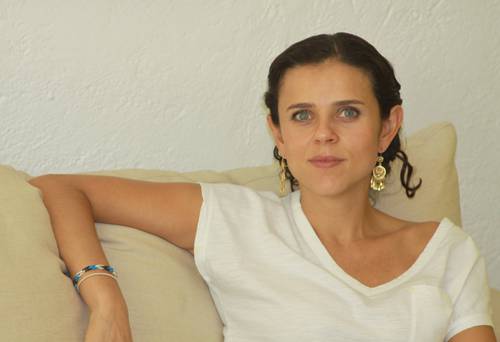The community is perhaps the main character of the novel The rest is silence, which has as its axis filial, couple and friendly ties, said Camila Villegas. The narrator, who is presenting her book today, added that it explores the search for our place in the world and answer the question who we are
.
The title edited by Tusquets, the playwright also told The Dayes the story of a man looking for his place. As simple as that. In that sense, we can connect with the protagonist because he is a bit of our journey through life. Montejo Lobo, implicitly, asks himself, what do I believe in now?
The author worked for two years in the Sierra Tarahumara with Rarámuri communities and from that experience almost foundational
his first novel emerged. It was part of an experience, links and another place that has haunted me for 10 years and it is something that I already needed to tell.
.
The narrative, continued Villegas (CDMX, 1974), is “inspired by many real things and was accompanied by questions that I had and could not solve. I had a teacher who said that we write to surround our silence, that is, to try to answer that which we cannot name. This is the case of this text: it has to do with what we believe now, how we construct ourselves as individuals and as a community, how we are relating to the environment and how that relationship goes through who we are.
They are very big questions, but for some reason they were linked to this story and this space. It was the vehicle to answer them, although I don’t think I managed to do so. I don’t know if that’s happy or terrible, because I will continue to have the impulse to look for other stories to raise those questions again.
The theater producer noted that The rest is silence is based on many real people and even on herself, “because part of the transformation that Montejo Lobo undergoes has to do with my own transformation when I arrived in the mountains with a way of seeing the world and found a very different way of connecting with myself.” itself, with the environment and with the community.
I was interested in the character being a wolf because of the zoological aspect: wolves do not survive without their pack, they are animals that cannot be understood outside of the community. That aspect is what shelters this character, who cannot exist if not in relation to others.
The title contains a disruptive element: “the presence of narco and the violence that goes through the daily lives of communities and how it affects the construction of the collective and the individual, but from a place of hope. They are communities of resistance. That is important. That is why these filial ties exist. Without these bonds of love it is not possible to resist narco”.
The theater researcher noted: “It was very important that all the characters were round. My closeness with Rarámuri men and women allowed me another perspective that has nothing to do with the typology of what is expected of the indigenous. Sometimes we chain it to certain expectations of the Western view.
My main challenge was to achieve the cadence that the world has and the way Spanish is constructed in the communities, which has to do with the rhythm and poetic construction of the language; the cadence as a certain evolution of the text that was taking us. In the chapters things happen that, I like to think, have to do with the slow, the quiet and the everyday.
Camila Villegas maintained that “there may be an ethical conflict in telling a story that by birth, let’s put it this way, does not belong to me. I solve it by saying that all literature talks about the other. As readers we approach literature to know it, and often as writers as well.
“What gives me ‘permission’ to tell these stories is that I have a connection to that place: I have friends there and my heart is there. I feel like I’m not stealing something that might be interesting. I resolve this potential conflict with authorial honesty: it has haunted me for 10 years and it is something I needed to tell and I am doing so.”
Accompanied by the writers Beatriz Rivas and Tamara Trottner, the author presents her novel today The rest is silence, at 7 p.m., at the La Increíble bookstore (Juan de la Barrera number 112, Condesa neighborhood).
